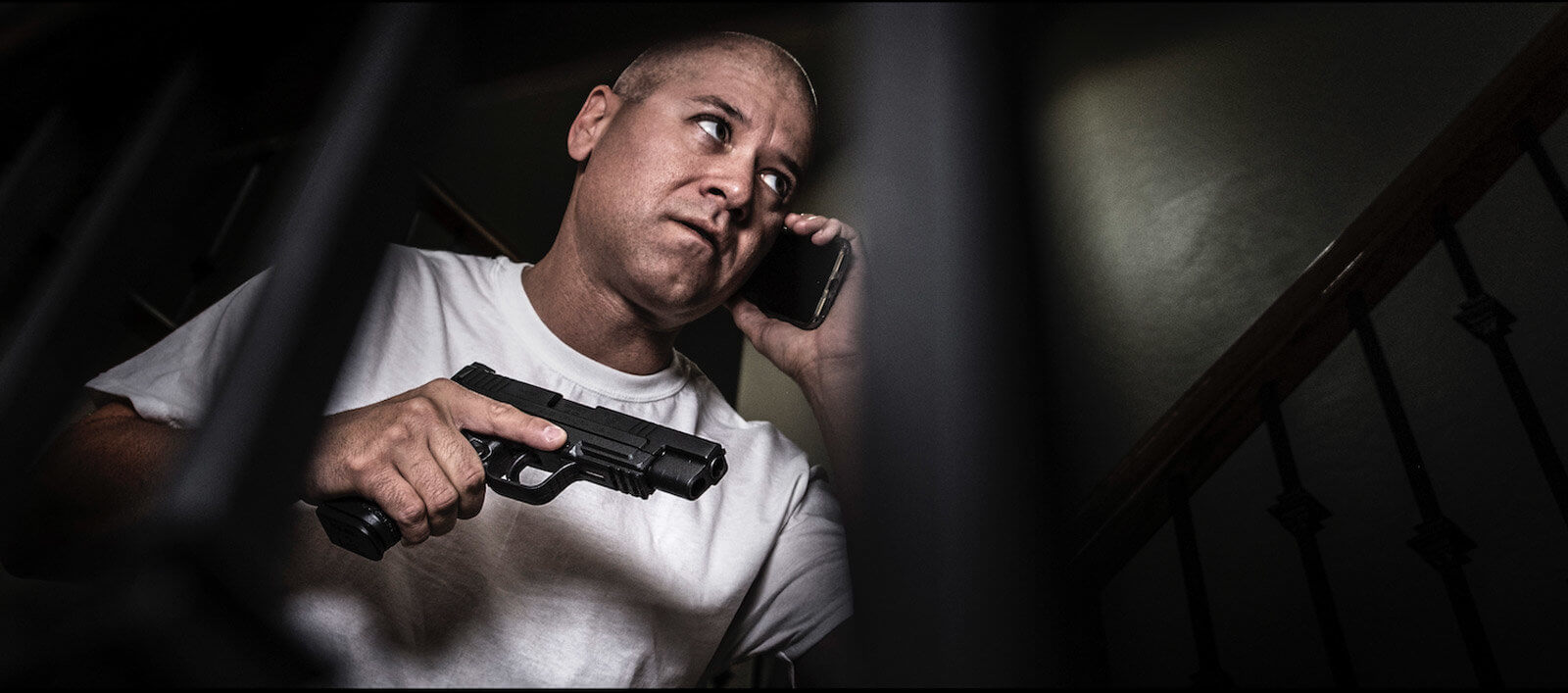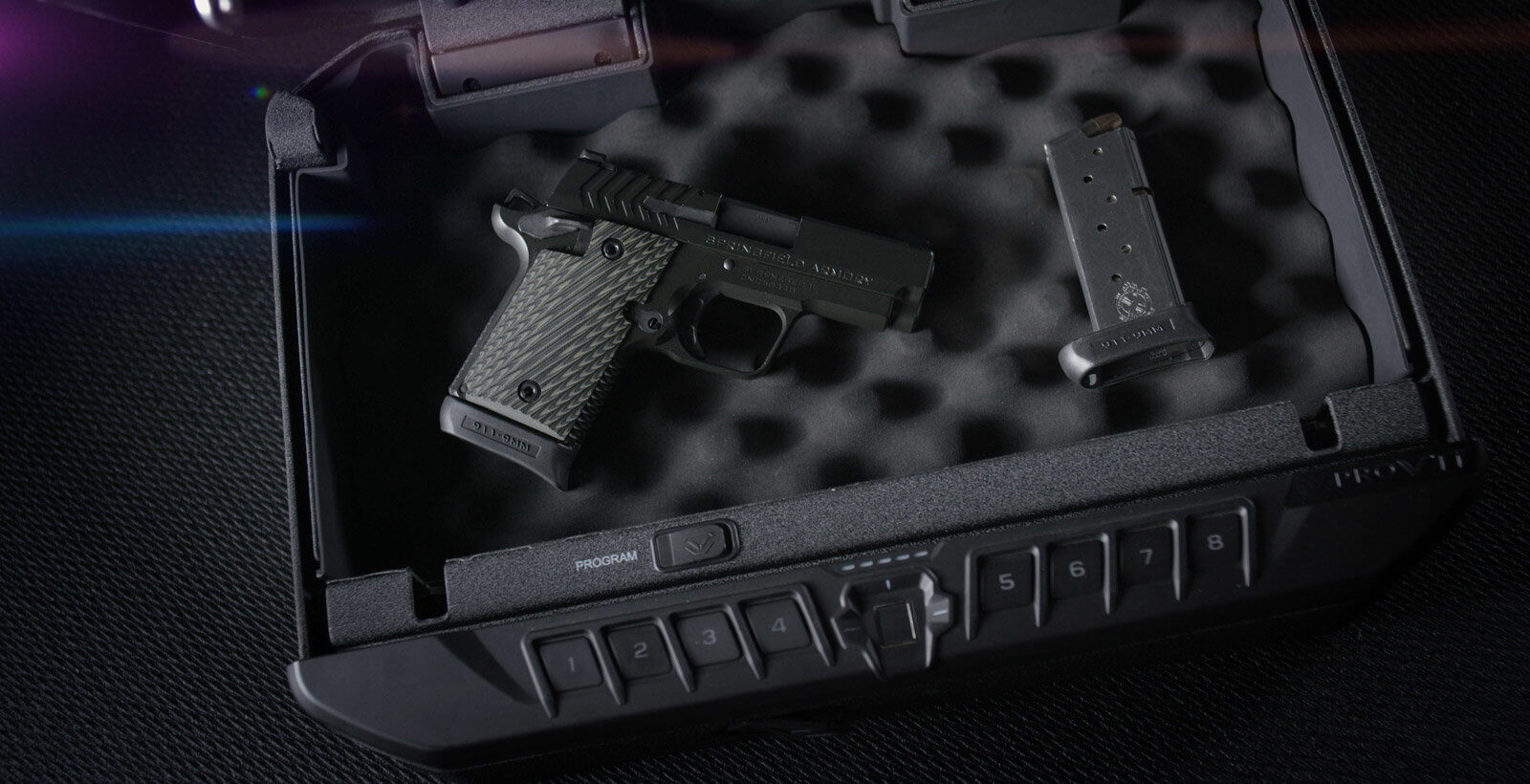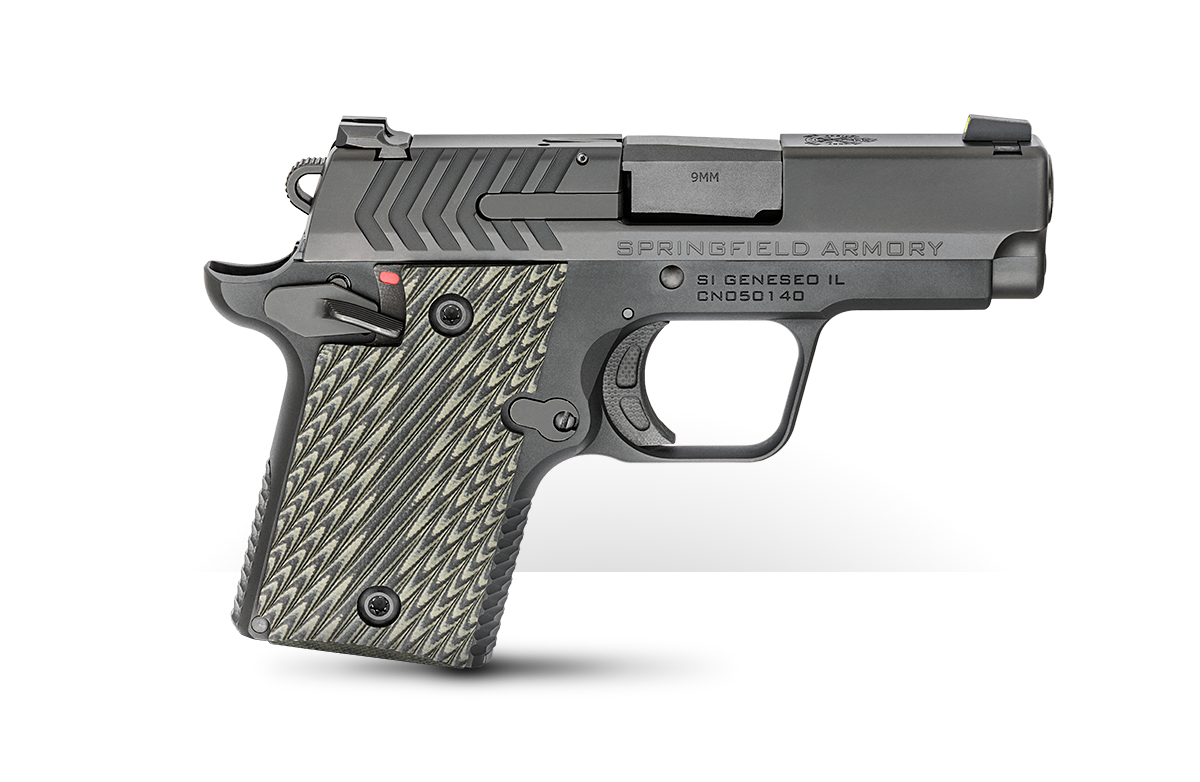Home Invasion — What Do You Do?
September 29th, 2019
5 minute read
If you own a firearm for protection, it’s not only your responsibility to train with it but also to think about what you would do in the event that you have to defend yourself or your family from a threat — and have a plan to support it. A threat can occur anytime and anywhere, including in your own home. Do you have a plan in the event that you have to deal with an intruder in your home?
Last Resort
In reality, unless you are part of a military or police team, the likelihood that you will need to search a structure for a bad guy is pretty slim. In fact, you should actively avoid it if at all possible and call the authorities. However, there may be a time that by necessity you must clear your own home.
Law enforcement and the military train continuously for clearing structures. However, the training is about more than proper gun handling and technically choreographed movements. Don’t misunderstand me, I am all about the aforementioned skills — after all I am a firearms instructor. But there is a third and more-important piece that is often neglected and taken for granted — the mental component.

Although most of my firearms instruction is taught with law enforcement duties in mind, I find that many of the mental principles translate seamlessly when transitioning over to everyday life.
Let’s use the following scenario as a starting point for mentally processing a house clearing:
- You are awakened at 2 a.m. by a loud crash from inside your home; it sounded like a window was just broken.
- Your children are sleeping in their rooms on the other side of your house.
- You immediately decide you need to go investigate.
Mental Processing
The following decision-making techniques should get you started off on the right foot:
- Identify the goal: If you are going to risk your life searching a structure for a person who is potentially dangerous, you must know why you are searching. You need to know what it is that you are trying to accomplish. In our scenario, the primary goal is to check on the safety of your children and ensure their safety. Always be aware of their room locations and keep that in mind relative to your firearm. The secondary goal is to clear the entire house to insure there are no unwanted intruders.
- Determine the level of urgency: This will establish what level of risk you’re willing to expose yourself to and the speed at which you need to get through the structure. Generally, the higher the level of urgency, the higher the level of risk you are willing to take and the faster you will need to get it done.

Low Urgency
When the urgency is low, you can take a lot more time to evaluate the problem and find the lowest-risk approach. For example, after arriving home from work you noticed your front door had been kicked in. Immediately you think you have been burglarized. You and your family were not home, so worst case scenario is some of your property was stolen. However, there is the potential that the suspect(s) could still be inside. Here, there is not any real urgency. Moving a safe distance away and waiting for the police to arrive to clear the house would be the lowest risk option.
High Urgency
When the urgency is high, you must be much more diligent and cannot spend as much time to evaluate every little detail, as the problem needs to be stopped immediately. For example, you hear a struggle and screams for help in the room where your child is. Now the level of urgency is high, as you know something is wrong for sure. Your response may be to race to the room where your child is. You are initially less concerned about looking for people in the rest of the house.
Medium Urgency
Things get even more complicated when the urgency is somewhere in between high and low. This becomes more challenging because we can’t just sit around and wait, but we really don’t even know if there’s a problem. These are the types of scenarios that generally get people in trouble. The first scenario we mentioned (the sound of a loud crash at 2 a.m.) is a medium-urgency scenario. We don’t really know if someone broke the window trying to get in the house or if the cat knocked something off of the counter.
As you start clearing the house, you also need gather more information about what is actually happening. Part of this process will inevitably include running different scenarios through your mind. Some of these scenarios may be from things that you have read about or things that your mind just dreams up. As your mind is racing, you must be cautious to not jump to a conclusion and make poor decisions before you have all of the necessary information.
School of Sight
I like to use the general principle of “be prepared for everything, but make your decisions based on what you actually see.” When we don’t actually know what is going on, we must actually see so we can properly identify the problem and then make a decision about what needs to be done.

Generally speaking, there are two main ways to improve what you can see:
- The first and most obvious method is to have light. Illuminating the target will allow you to see all of the details and provide you with decision-making information. Flipping on a light switch or having a light attached to the gun is one of the best ways to make sure you have a light accessible at all times. This also keeps your hands free to operate your personal defense firearm.
- The second way — and the one I see people struggle with the most — is to keep the gun down low enough so it does not hinder your vision. For some reason, people think that having the gun up at their line of sight will save time when identifying and reacting to a threat. The opposite is true. When the gun is up in your line of sight, it blocks your vision and prevents you from fully seeing everything. In order to make a decision, you must first lower the gun to visually scan and evaluate the potential threat. Once that is done then, if necessary, you can bring the gun back up to eye level, aim, and fire. It’s so important to fully see the threat, as it allows for better and faster decision making.
In addition, seeing the threat is directly related to one of the primary gun safety rules: You must positively identify the target and what is beyond the target. That includes your kids’ rooms and anyone else who may be in the house.
Just the (Visual) Facts
The fact is, the decision to shoot cannot be made because we think something may happen, or something may have moved, or we might have heard a noise. We must base our decision on what we actually see.
It is ultimately your responsibility to make the decision if you need to clear your home or not, pull the trigger or not — and you must base it on the information you have while complying with the laws in your state and focusing on your safety as well as that of those under your protection. Making the proper decision is the most important component.
Join the Discussion
Featured in this article
Continue Reading
Did you enjoy this article?

 170
170







